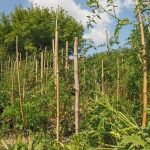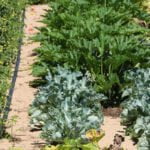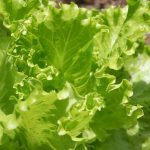Are you interested in vegetable gardening in Central Virginia? This region offers a unique climate and growing conditions that are ideal for a variety of vegetables. From the rolling hills to the rich soil, Central Virginia provides an excellent environment for cultivating a bountiful garden.
Central Virginia experiences a moderate climate with four distinct seasons, making it perfect for a diverse range of vegetables. Whether you’re a seasoned gardener or just starting out, understanding the unique climate and environmental factors of Central Virginia is essential for successful vegetable gardening.
In this article, we will explore the best vegetables to grow in Central Virginia’s climate, provide tips for soil preparation and maintenance, discuss how to deal with pests and diseases specific to the region, and highlight local resources and nurseries. Additionally, we’ll share success stories of vegetable gardening in Central Virginia and offer a seasonal planting and harvesting guide.
Whether you’re looking to join a community of fellow gardeners or practice sustainable and organic gardening methods, we’ve got you covered. Get ready to dig in and discover the joys of vegetable gardening in Central Virginia.
Best Vegetables to Grow in Central Virginia’s Climate
When it comes to vegetable gardening in Central Virginia, the climate plays a significant role in determining which vegetables will thrive in the region. With its hot and humid summers, and generally mild winters, Central Virginia provides a great environment for growing a wide variety of vegetables. Here are some of the best vegetables to consider planting in your Central Virginia garden:
- Tomatoes – There are countless varieties of tomatoes that can be successfully grown in Central Virginia. From beefsteak to cherry tomatoes, they all do well in the region’s warm and sunny climate.
- Zucchini – This fast-growing and prolific vegetable is well-suited for Central Virginia’s fertile soil and ample sunlight.
- Green Beans – Whether it’s bush or pole beans, both types thrive in Central Virginia’s warm summer weather.
- Peppers – Bell peppers and hot peppers alike flourish in the long, warm growing season of Central Virginia.
In addition to these vegetables, other popular choices for Central Virginia gardens include cucumbers, squash, eggplant, and various leafy greens like lettuce and kale. While these vegetables are well-suited for the climate in Central Virginia, it’s important to still consider factors such as soil quality and available sunlight when planning your garden.
For those new to vegetable gardening in Central Virginia or looking to expand their knowledge base, connecting with local resources and nurseries can be incredibly beneficial. They often provide expert advice on which vegetables grow best in the area’s climate and offer locally adapted seeds and seedlings. By taking advantage of these resources, gardeners can set themselves up for success as they cultivate their vegetable gardens.
Tips for Soil Preparation and Maintenance in Central Virginia
Central Virginia has a unique climate that can make soil preparation and maintenance crucial for successful vegetable gardening. The region experiences hot, humid summers and relatively mild winters. The soil in Central Virginia is often clay-based, which can present challenges for gardeners. However, with the right techniques, it is possible to have a thriving vegetable garden in this region.
One of the first steps in soil preparation for vegetable gardening in Central Virginia is soil testing. This will help determine the pH level of the soil and its nutrient content. Based on the results, the soil may need to be amended with organic matter such as compost or well-rotted manure to improve its structure and fertility. Additionally, adding mulch to the soil can help retain moisture, regulate temperature, and suppress weeds.
Regular maintenance of the soil in Central Virginia’s vegetable gardens is essential for long-term success. This may involve regular weeding, watering during dry periods, and adding organic fertilizers as needed throughout the growing season. Crop rotation is also important to prevent depletion of nutrients and reduce the risk of diseases. By following these tips for soil preparation and maintenance, vegetable gardeners in Central Virginia can create a healthy and productive growing environment for their plants.
| Soil Preparation Tips | Maintenance Tips |
|---|---|
| Conduct a soil test | Regular weeding |
| Add organic matter | Watering during dry periods |
| Use mulch to retain moisture | Add organic fertilizers as needed |
By implementing sustainable practices such as composting kitchen scraps and using natural pest control methods, gardeners can further enhance the health of their soil while minimizing their environmental impact.
Overall,
Dealing With Pests and Diseases in Central Virginia’s Vegetable Gardens
Pests and diseases can pose a challenge to vegetable gardening in Central Virginia, but with the right knowledge and practices, gardeners can effectively manage and minimize their impact. One of the key considerations for dealing with pests and diseases is to select vegetable varieties that are well-suited to the local climate and resistant to common issues in the region. Additionally, practicing crop rotation and companion planting can help reduce the risk of infestations and infections.
When it comes to pest management, it’s important for vegetable gardeners in Central Virginia to regularly inspect their plants for signs of insect damage or infestation. Handpicking pests such as caterpillars or using insecticidal soaps can be effective methods for controlling populations without resorting to chemical treatments. Encouraging natural predators like ladybugs or lacewings can also provide ongoing pest control support in the garden.
In terms of disease management, maintaining good airflow between plants, proper watering practices, and sanitation measures can help prevent the spread of fungal and bacterial issues. Gardeners should promptly remove any infected plant material and avoid working in wet conditions to minimize the risk of spreading diseases.
Additionally, selecting disease-resistant varieties and using organic fungicides when necessary can further support a healthy garden. By staying vigilant and implementing proactive strategies, vegetable gardeners in Central Virginia can effectively deal with pests and diseases while promoting overall garden health.
Local Resources and Nurseries for Vegetable Gardening in Central Virginia
When it comes to starting a vegetable garden in Central Virginia, having access to the right resources and nurseries can make all the difference. Fortunately, there are several local resources and nurseries that cater specifically to vegetable gardening in this region.
Local Gardening Centers
Central Virginia is home to numerous gardening centers that offer a wide range of seeds, seedlings, and other essential supplies for vegetable gardeners. These centers often carry varieties of plants that are well-suited to the specific climate and soil conditions of the region, making it easier for gardeners to find the right vegetables for their gardens.
Farmers’ Markets
For those looking for locally grown produce and expert advice on vegetable gardening in Central Virginia, farmers’ markets are an excellent resource. Many farmers’ markets in the area not only sell fresh vegetables but also provide valuable information on planting, growing, and harvesting techniques tailored to Central Virginia’s climate.
Community Gardens
In addition to traditional nurseries and gardening centers, community gardens offer a unique resource for aspiring vegetable gardeners. These communal spaces provide opportunities for individuals to learn from experienced gardeners, share tips and tricks with fellow enthusiasts, and access tools or equipment that they may not have at home. Community gardens also foster a sense of camaraderie among local gardeners and allow them to exchange seeds or seedlings for their own gardens.
With these local resources and nurseries available in Central Virginia, both novice and experienced vegetable gardeners can find the support they need to cultivate thriving gardens in this unique environment. Whether seeking advice from seasoned experts at farmers’ markets or learning alongside peers at community gardens, there are ample opportunities for individuals to enhance their knowledge of vegetable gardening in Central Virginia.
Success Stories of Vegetable Gardening in Central Virginia
From Novice to Expert
Many individuals in Central Virginia have found success with their vegetable gardens, even if they started out with little to no experience. One such success story is that of a local resident who began vegetable gardening as a hobby and now supplies fresh produce to local farmers’ markets. With dedication, research, and the support of the community, this individual was able to turn their passion for vegetable gardening into a thriving business.
Community Gardens
In Central Virginia, community gardens have been instrumental in bringing people together and fostering a love for vegetable gardening. These shared spaces have not only provided access to fresh produce for local residents but also created a sense of unity and collaboration within the community. Many individuals who were initially hesitant to start their own garden found support and encouragement through community gardening initiatives.
Adapting to Climate Challenges
Despite the unique climate challenges in Central Virginia, many vegetable gardeners have successfully adapted their practices to maximize their yields. By experimenting with different varieties of vegetables, implementing season-extending techniques, and using protective covers, these gardeners have been able to overcome obstacles and enjoy bountiful harvests. Their stories serve as inspiration for others facing similar climate-related challenges in their own vegetable gardens.
Seasonal Planting and Harvesting Guide for Central Virginia
Central Virginia has a diverse climate that allows for year-round vegetable gardening. Understanding the seasonal planting and harvesting schedule is essential for a successful garden. In the spring, some of the best vegetables to plant include lettuce, spinach, peas, carrots, and radishes. These cool-season crops thrive in the milder temperatures of early spring and can be harvested before the peak of summer heat.
As the summer months approach, it’s time to transition to warm-season vegetables such as tomatoes, peppers, cucumbers, squash, and beans. These plants require plenty of sunlight and warm soil to flourish. Late summer is also a good time to start planting fall crops such as broccoli, cabbage, kale, and Brussels sprouts. By doing so, you can extend your harvest well into the autumn months.
When fall arrives in Central Virginia, it’s a great time to consider planting cover crops like rye or clover to help protect the soil through the winter months. Additionally, certain cold-hardy vegetables such as onions, garlic, and potatoes can be planted in the fall for a late spring harvest. Understanding these seasonal planting and harvesting schedules will ensure that you make the most of your vegetable garden throughout the year.
| Vegetables | Planting Time | Harvesting Time |
|---|---|---|
| Lettuce | Early Spring | Spring/Early Summer |
| Tomatoes | Late Spring/Early Summer | Mid/Late Summer |
| Kale | Late Summer/Early Fall | Fall/Winter |
Community and Support for Vegetable Gardeners in Central Virginia
When it comes to vegetable gardening in Central Virginia, the local community and support networks play a crucial role in ensuring success and enjoyment in this rewarding hobby. Whether you are a beginner or an experienced gardener, connecting with like-minded individuals can provide valuable resources, advice, and camaraderie. Fortunately, Central Virginia is home to a vibrant community of vegetable gardeners who are passionate about sharing their knowledge and experiences.
One way to tap into the community and support for vegetable gardening in Central Virginia is by joining local gardening clubs or associations. These groups often provide educational workshops, guest speakers, and garden tours that can inspire and educate gardeners of all levels. Some popular gardening organizations in Central Virginia include the Central Virginia Master Gardeners Association and the Richmond Area Vegetable Gardeners.
Another valuable resource for vegetable gardeners in Central Virginia is the network of community gardens. These shared spaces not only provide access to land for those without their own garden plots but also foster a sense of camaraderie among participants. Community gardens often host events and workdays where members can come together to exchange ideas, share tips, and collaborate on collective projects.
Additionally, social media platforms and online forums have become increasingly popular tools for connecting with other vegetable gardeners in Central Virginia. Websites such as Meetup.com or Facebook groups dedicated to local gardening can be a great way to find like-minded individuals, seek advice, and stay updated on upcoming events and opportunities related to vegetable gardening in the area.
Community Support Options
- Local gardening clubs or associations
- Community gardens
- Social media platforms and online forums
Sustainable and Organic Practices for Vegetable Gardening in Central Virginia
In conclusion, vegetable gardening in Central Virginia offers a wealth of opportunities for enthusiasts to cultivate their own produce while enjoying the region’s unique climate. By adopting sustainable and organic practices, gardeners can further enhance the quality of their crops and contribute to a healthier environment. With the right knowledge and resources, anyone can embrace this eco-friendly approach to gardening in Central Virginia.
As outlined in this article, there are various tips for soil preparation and maintenance specific to the region that can help sustain organic vegetable growing. By utilizing local resources and nurseries, gardeners can access the necessary tools and plants needed for successful organic gardening in Central Virginia. Additionally, joining community support networks can provide valuable advice and encouragement from like-minded individuals who share an enthusiasm for sustainable vegetable gardening.
Successful stories have proven that with proper planning and seasonal planting strategies, even those new to sustainable gardening in Central Virginia can achieve fruitful yields. By taking steps to address issues such as pests and diseases effectively, organic gardeners can minimize their reliance on harmful chemicals without compromising the health of their crops. Overall, embracing these practices not only benefits individual gardeners but also contributes positively to the wider environment of Central Virginia.
Frequently Asked Questions
When Should I Start My Vegetable Garden in Virginia?
In Virginia, the best time to start your vegetable garden is typically in late March to early April. This allows the soil to warm up and reduces the risk of frost damaging your plants.
What Vegetables Are Good to Grow in Virginia?
Virginia’s climate is suitable for a wide variety of vegetables. Some good options to grow in the state include tomatoes, peppers, squash, cucumbers, green beans, corn, and various types of leafy greens like lettuce and kale.
Is Virginia a Good State for Gardening?
Virginia can be a great state for gardening due to its diverse climate and growing seasons. However, it’s important to be mindful of the specific conditions in your area as they can vary across the state. With proper planning and care, gardening can be very successful in Virginia.

If you’re looking to get into vegetable gardening, or are just looking for some tips on how to make your current garden better, then you’ve come to the right place! My name is Ethel and I have been gardening for years. In this blog, I’m going to share with you some of my best tips on how to create a successful vegetable garden.





